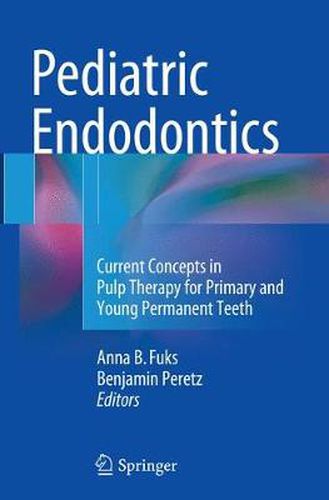Readings Newsletter
Become a Readings Member to make your shopping experience even easier.
Sign in or sign up for free!
You’re not far away from qualifying for FREE standard shipping within Australia
You’ve qualified for FREE standard shipping within Australia
The cart is loading…






This book provides dental professionals with a clear understanding of current clinical and scientific knowledge on the various aspects of pulp treatment for both primary and young permanent teeth. Diagnostic parameters are clearly presented, along with step-by-step descriptions of clinical procedures, including indirect and direct pulp treatments, pulpotomy, and pulpectomy. The rationale for the materials used in each technique and their individual merits and disadvantages are examined in detail. In the case of pulpotomy, all the materials used since the introduction of this treatment modality are discussed (e.g., formocresol, glutaraldehyde, ferric sulfate, and MTA) and the roles of sodium hypochlorite, electrofulguration, and laser therapy are elucidated. Special attention is devoted to pulpectomy and root canal treatment, with consideration of debriding and obturation techniques, rinsing solutions, and root-filling pastes. A further individual chapter is dedicated to restorations of teeth treated with the different types of pulp therapy. The various conservative treatment modalities are also presented, including specific treatments for immature nonvital permanent teeth. The concluding chapter looks to the future and the potential value of stem cells in pulp therapy.
$9.00 standard shipping within Australia
FREE standard shipping within Australia for orders over $100.00
Express & International shipping calculated at checkout
This book provides dental professionals with a clear understanding of current clinical and scientific knowledge on the various aspects of pulp treatment for both primary and young permanent teeth. Diagnostic parameters are clearly presented, along with step-by-step descriptions of clinical procedures, including indirect and direct pulp treatments, pulpotomy, and pulpectomy. The rationale for the materials used in each technique and their individual merits and disadvantages are examined in detail. In the case of pulpotomy, all the materials used since the introduction of this treatment modality are discussed (e.g., formocresol, glutaraldehyde, ferric sulfate, and MTA) and the roles of sodium hypochlorite, electrofulguration, and laser therapy are elucidated. Special attention is devoted to pulpectomy and root canal treatment, with consideration of debriding and obturation techniques, rinsing solutions, and root-filling pastes. A further individual chapter is dedicated to restorations of teeth treated with the different types of pulp therapy. The various conservative treatment modalities are also presented, including specific treatments for immature nonvital permanent teeth. The concluding chapter looks to the future and the potential value of stem cells in pulp therapy.